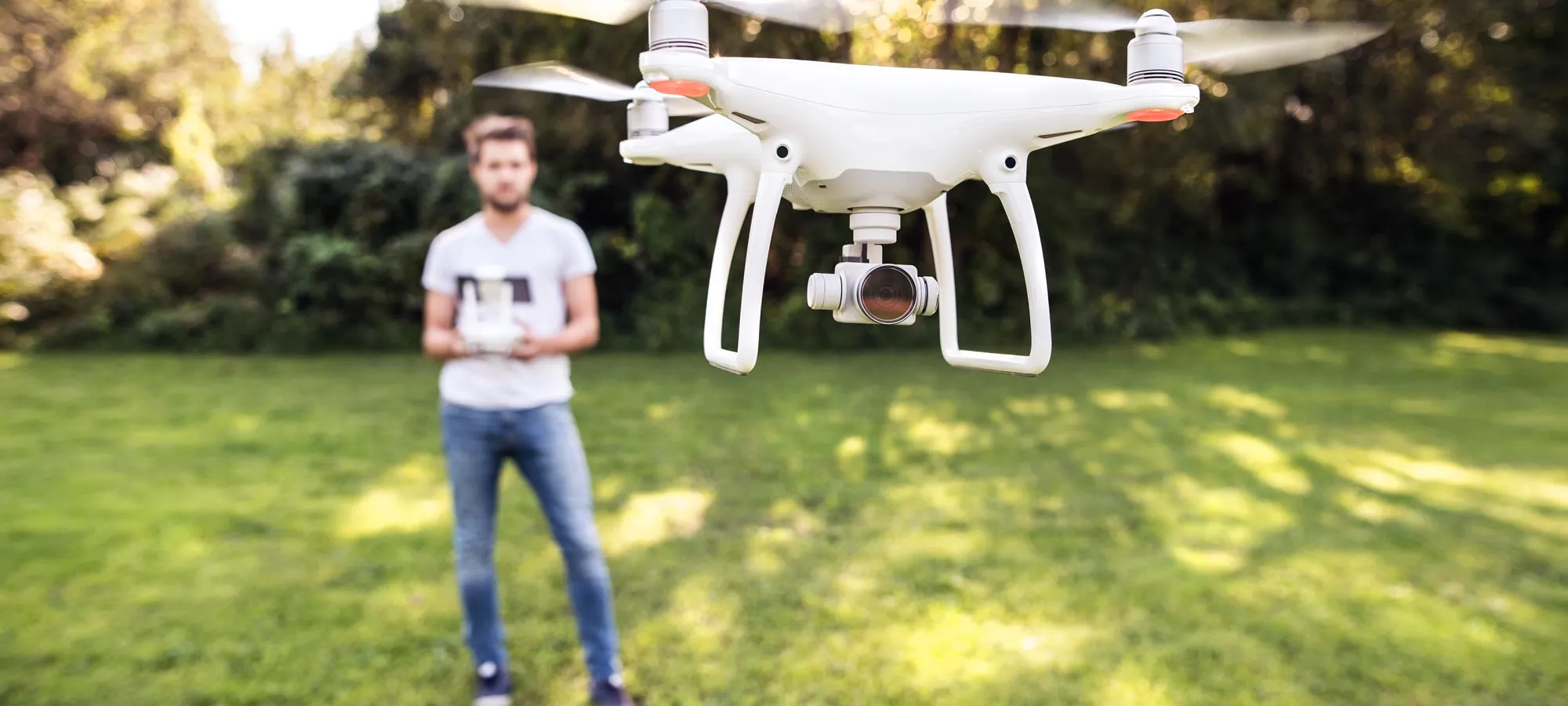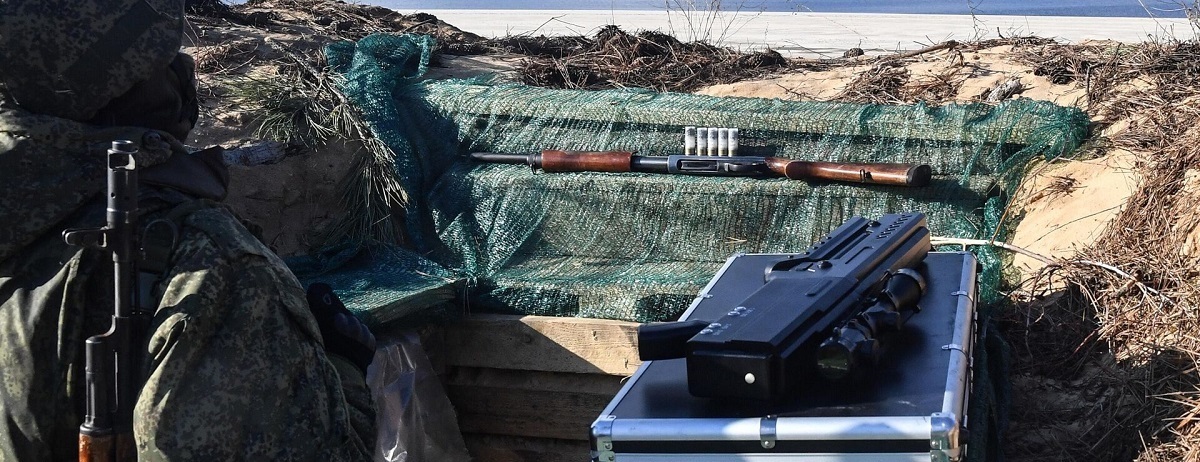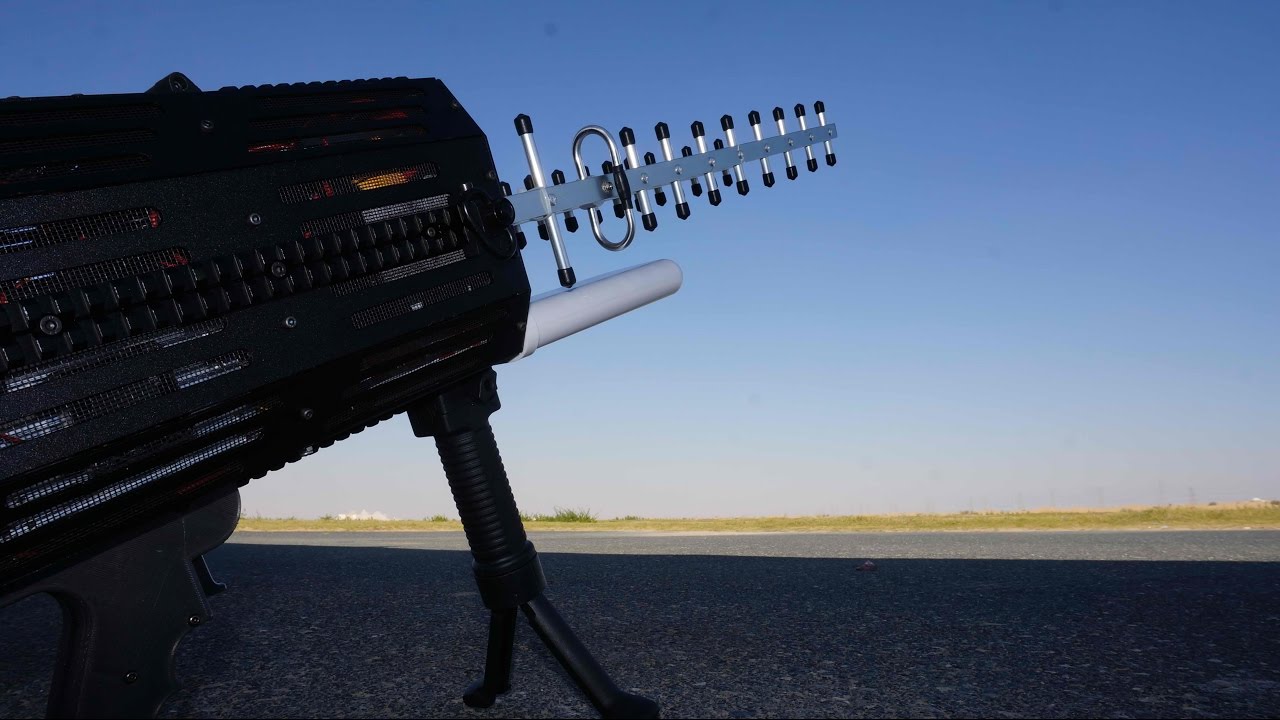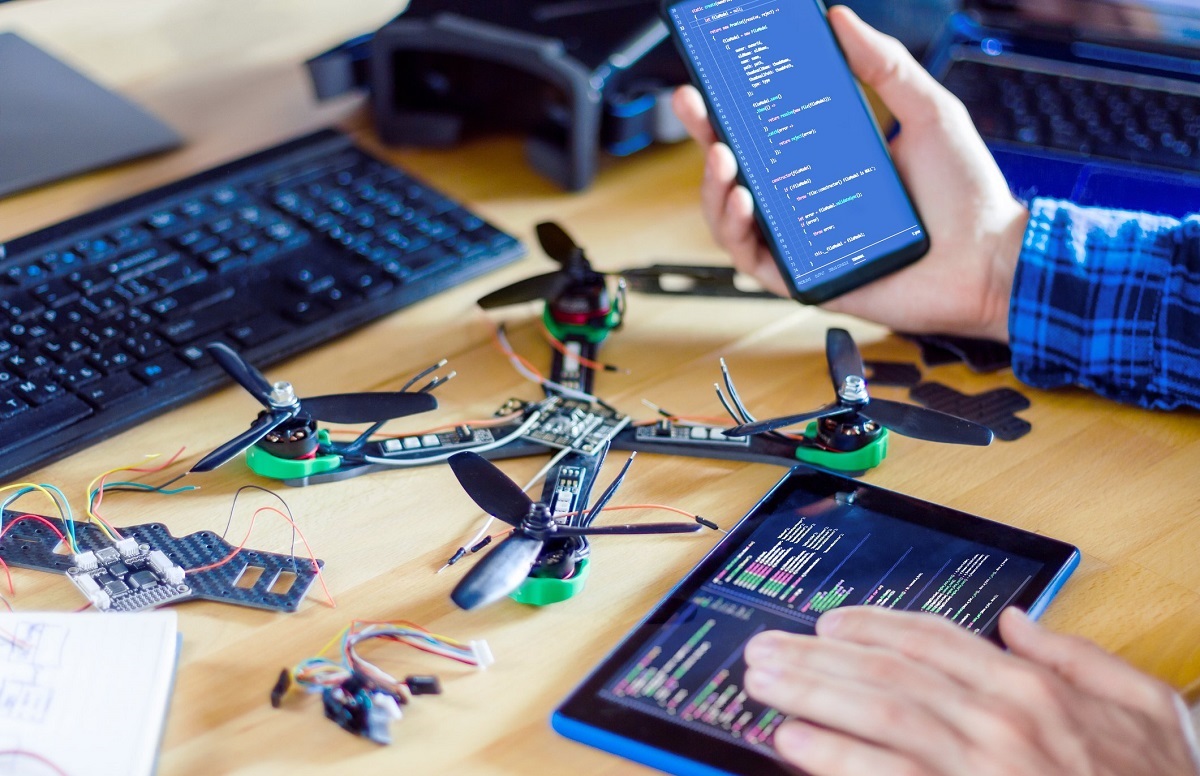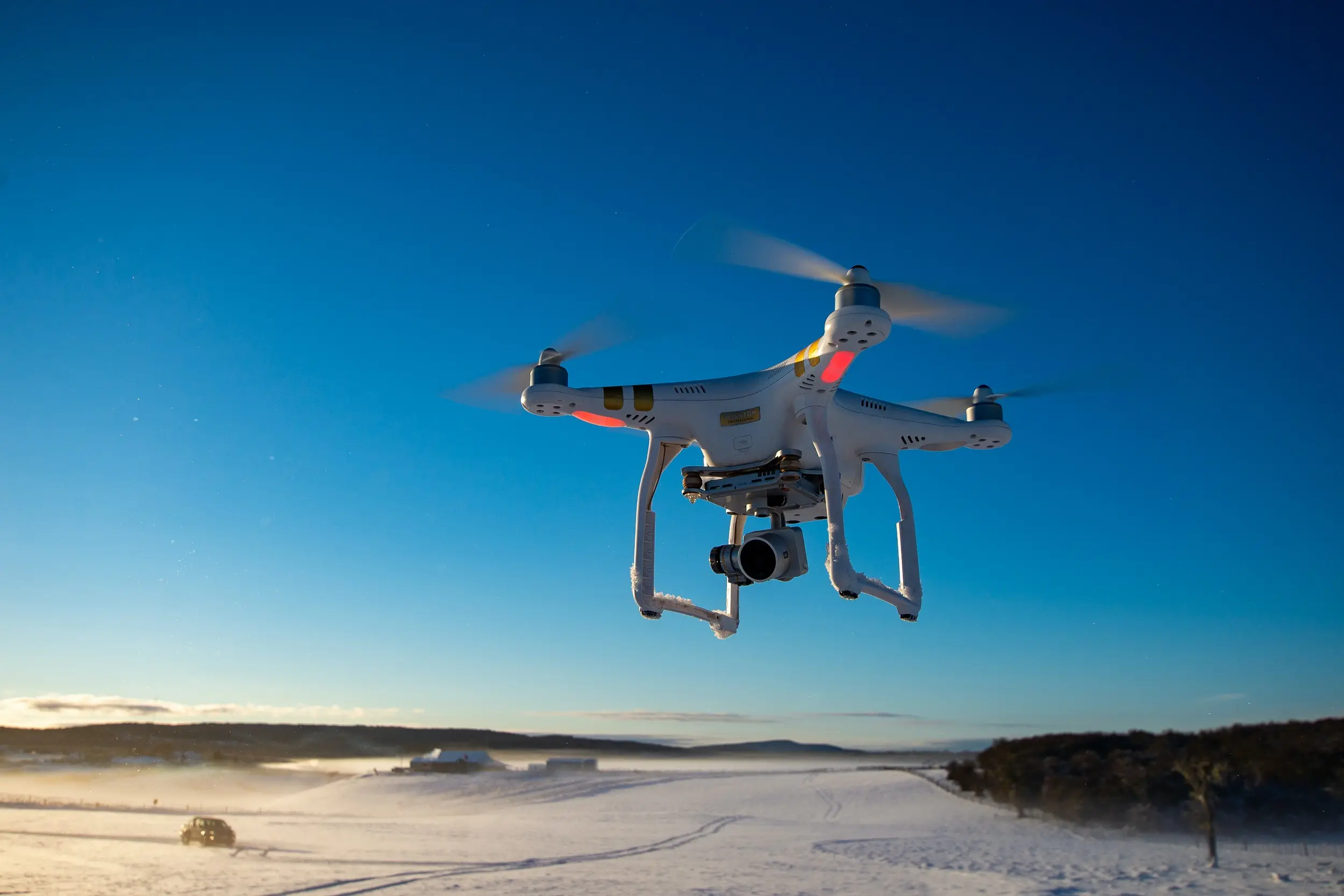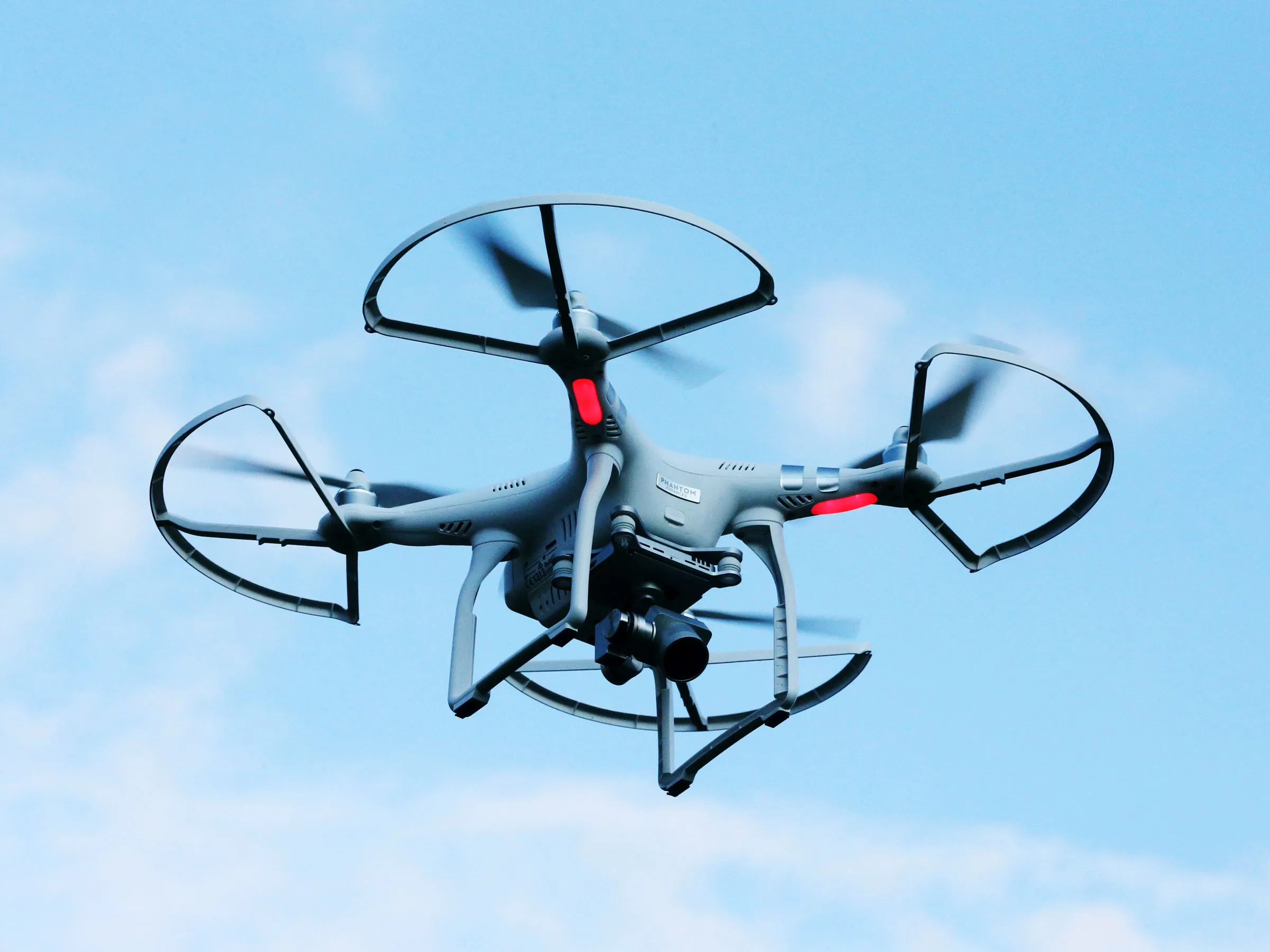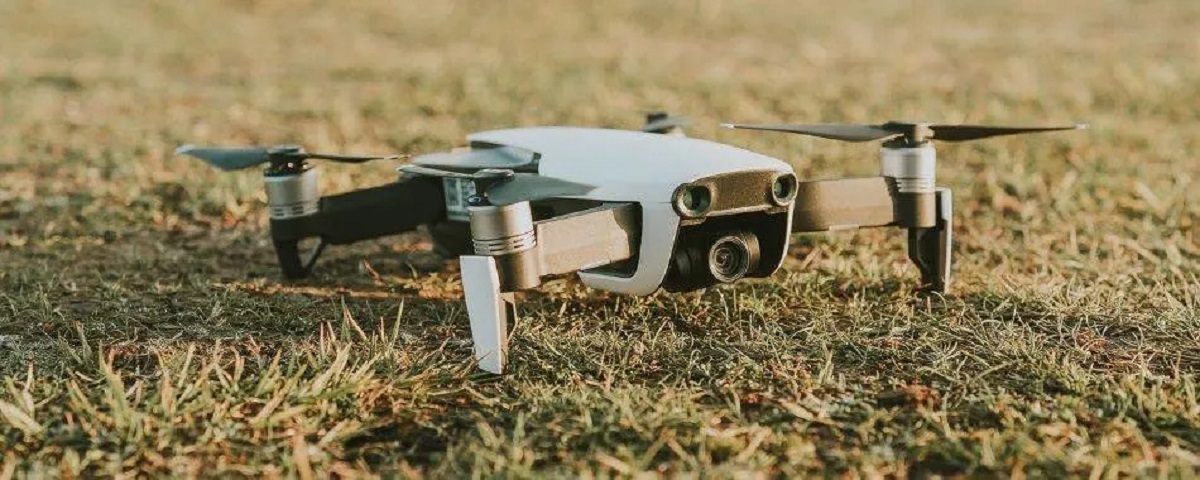Choosing the Right Drone
When it comes to purchasing a drone, there are a few factors to consider to ensure you choose the right one for your needs. With an overwhelming number of options available in the market, selecting the perfect drone can be a daunting task. However, by keeping the following considerations in mind, you can make an informed decision that suits your requirements.
1. Purpose: Determine the purpose for which you plan to use the drone. Are you looking to capture aerial photographs, shoot videos, or simply enjoy flying as a hobby? Different drones are designed to excel in specific areas, so understanding your purpose will help narrow down your options.
2. Features and Specifications: Carefully review the features and specifications of the drones you are considering. Look for aspects like camera resolution, flight time, range, and stability. Additionally, consider features such as obstacle avoidance, follow-me mode, and GPS capabilities, depending on your specific needs.
3. Budget: Set a budget range that you are comfortable with and stick to it. Drones come in a wide price range, from budget-friendly options to high-end professional models. Determine how much you are willing to invest in a drone to get the best value for your money.
4. Skill Level: Consider your skill level as a drone pilot. If you are a beginner, it is advisable to start with a user-friendly, easy-to-fly drone with built-in flight assistance features. As you gain more experience and confidence, you can upgrade to more advanced models.
5. Brand Reputation: Research the reputations of different drone brands to ensure you are purchasing from a reliable manufacturer. Read reviews and customer feedback to get an understanding of the quality, performance, and customer support offered by the brand.
6. Regulations and Restrictions: Familiarize yourself with the drone regulations and restrictions in your area. Different countries and regions have varying rules regarding drone usage, such as height limitations, no-fly zones, and licensing requirements. Ensure that the drone you choose complies with the local regulations.
By considering these factors, you can make a well-informed decision when selecting a drone that aligns with your needs and preferences. Remember, choosing the right drone will not only enhance your aerial photography or videography experience but also ensure your safety and compliance with regulations.
Understanding Drone Terminology
Before diving into the world of drones, it’s essential to familiarize yourself with the commonly used terminology. Understanding these drone-specific terms will not only help you decipher technical specifications but also enable clear communication with other drone enthusiasts. Here are some key terms to know:
1. Quadcopter: A quadcopter is a type of drone that has four rotors or propellers. It is the most common configuration for consumer drones due to its stability and maneuverability.
2. GPS: GPS stands for Global Positioning System. Drones equipped with GPS technology can determine their exact location and utilize this information for flight planning, accurate hovering, and return-to-home functions.
3. FPV: FPV stands for First-Person View. It involves live video transmission from the drone’s onboard camera to a screen or FPV goggles, allowing the pilot to have a real-time view as if they were inside the drone.
4. Altitude Hold: Altitude hold is a feature that allows the drone to maintain a consistent altitude without input from the pilot. It is particularly useful for aerial photography and videography as it ensures smooth and stabilized shots.
5. Brushless Motors: Brushless motors are more efficient, durable, and powerful compared to brushed motors. They are commonly used in high-end drones for improved performance and longer flight times.
6. Gimbal: A gimbal is a mechanical stabilization system that keeps the camera steady and level during flight. It counteracts the drone’s movements, resulting in smooth and shake-free footage.
7. Waypoints: Waypoints are pre-determined locations or coordinates that can be programmed into a drone’s flight path. The drone will autonomously fly between these waypoints, allowing for precise navigation.
8. Return-to-Home (RTH): RTH is a safety feature that automatically directs the drone to fly back to its takeoff point. It can be activated manually by the pilot or triggered by low battery levels or loss of communication.
9. Obstacle Avoidance: Obstacle avoidance systems use sensors or cameras to detect and avoid obstacles during flight. This feature safeguards the drone from collisions and potential damage.
10. Transmitter: The transmitter, also known as the remote controller or radio controller, is the handheld device used to control the drone’s flight. It communicates with the drone using radio frequencies.
By understanding these key drone terms, you will have a solid foundation to explore the world of drones and engage in discussions with fellow drone enthusiasts. So, whether you’re tinkering with your first drone or upgrading to a more advanced model, knowing the terminology will help you make informed decisions and enhance your overall drone experience.
Drone Safety Guidelines
Operating a drone responsibly and safely is crucial to ensure the well-being of yourself, others, and the environment. Whether you’re a beginner or an experienced pilot, following these essential drone safety guidelines is of paramount importance:
1. Register Your Drone: In many countries, drones weighing over a certain limit must be registered with the aviation authority. Make sure to check and comply with the local regulations regarding drone registration.
2. Read the User Manual: Familiarize yourself with the user manual of your drone before flying. Understanding the specific features, flight modes, and limitations of your drone will help you operate it safely.
3. Choose a Safe Flying Location: Select a suitable flying location away from crowded areas, airports, and sensitive locations. Consider the surrounding environment, weather conditions, and potential obstacles or hazards that may interfere with your flight.
4. Respect Privacy: Respect the privacy and personal space of others. Avoid flying your drone near or over private properties without permission from the owner. Always be mindful of capturing footage that may infringe on someone’s privacy.
5. Keep Visual Line of Sight: Keep your drone within your visual line of sight at all times during the flight. This enables better control and helps you avoid collisions with other objects or aircraft in the vicinity.
6. Follow Height and Distance Limitations: Abide by the height and distance limitations specified by local regulations. Flying too high or too far can pose risks to other aircraft, pedestrians, or structures in the area.
7. Avoid Flying in Adverse Weather: Avoid flying your drone in strong winds, rain, fog, or other adverse weather conditions. Unfavorable weather can affect the stability and control of the drone, increasing the risk of accidents.
8. Maintain a Safe Distance: Maintain a safe distance from people, animals, and objects during flight. Be cautious not to fly your drone too close to people or animals, as it may cause harm or distress.
9. Monitor Battery Level: Keep a close eye on the drone’s battery level during flight. Plan your flights to ensure that you have sufficient battery power for a safe return and to prevent the drone from unexpectedly losing power mid-flight.
10. Be Prepared for Emergencies: Have a plan in place for emergencies, such as a loss of control or a drone malfunction. Be aware of emergency landing procedures and know how to respond to unexpected scenarios.
Adhering to these drone safety guidelines not only ensures your personal safety but also contributes to a positive image and acceptance of drones in the community. Always remember, responsible drone flying is essential for the advancement and sustainability of this exciting field.
How to Fly a Drone
Flying a drone can be an exhilarating experience, but it’s important to learn the basics and follow proper techniques to ensure a safe and enjoyable flight. Whether you’re a novice or have some experience, these step-by-step instructions will guide you on how to fly a drone:
1. Read the User Manual: Familiarize yourself with the user manual of your drone. Understand the controls, flight modes, and safety protocols specific to your model. Pay attention to any pre-flight checks or calibrations required.
2. Choose an Open Area: Find a spacious open area, away from obstacles, people, and buildings. A grassy field or a large park is ideal for practicing your drone flying skills.
3. Perform Pre-Flight Checks: Inspect your drone before takeoff. Check for any damage, loose parts, or malfunctioning components. Ensure the battery is properly charged and securely attached.
4. Power Up: Power on your drone and remote control. Allow the drone and remote control to sync before taking off. Follow the specific procedure outlined in the user manual for your drone model.
5. Practice Basic Controls: Familiarize yourself with the basic controls of the drone, including throttle (up and down), yaw (rotation left and right), pitch (forward and backward movement), and roll (side-to-side movement).
6. Take Off: Slowly increase the throttle to lift the drone off the ground. Maintain a slow and steady ascent to avoid sudden movements. Keep the drone at a low altitude while you gain confidence and control.
7. Hovering: Practice hovering in one spot by making small adjustments to maintain stability. Use the throttle, yaw, and roll controls to maintain your desired position.
8. Flight Maneuvers: Once you feel comfortable with hovering, practice different flight maneuvers such as forward and backward movements, lateral movements, and circular flights. Gradually increase the complexity of the maneuvers as you gain more experience.
9. Ground Reference Points: Use ground reference points like trees, lampposts, or other landmarks to help you maintain orientation and control. This can be especially helpful when flying the drone at a distance.
10. Land Safely: When you are ready to land, slowly decrease the throttle and guide the drone down gently. Always land on a flat and stable surface to prevent any damage to the drone.
Remember to start with slow and controlled movements, gradually increasing speed and complexity as you become more comfortable and skilled. Practice regularly to improve your piloting abilities and always prioritize safety during your drone flights.
Capturing Stunning Aerial Photographs
One of the most exciting aspects of drone flying is the ability to capture breathtaking aerial photographs. With the right techniques and approach, you can elevate your photography skills and create stunning images from a unique perspective. Here are some tips to help you capture amazing aerial photographs:
1. Plan Your Shots: Before taking flight, plan your photography session. Scout the location, identify interesting subjects, and envision the composition you want to achieve. Having a plan will help you capture more intentional and visually appealing photographs.
2. Use the Rule of Thirds: Apply the rule of thirds to create well-balanced and visually pleasing compositions. Imagine dividing your frame into a 3×3 grid and position your subjects along the intersection points or along the grid lines.
3. Experiment with Angles and Perspectives: Drones offer the advantage of capturing photos from various heights and angles. Try shooting from different elevations, tilting the camera, or capturing images while the drone is in motion to add dynamism to your photographs.
4. Utilize Leading Lines: Look for natural or man-made leading lines in the landscape, such as roads, rivers, or fences. These lines can draw the viewer’s attention and create depth and visual interest in your photographs.
5. Showcase Patterns and Symmetry: Aerial photography provides a unique opportunity to capture patterns, textures, and symmetry. Look for repetitive shapes, geometric patterns, or symmetrical landscapes to create visually captivating images.
6. Experiment with Lighting Conditions: Take advantage of different lighting conditions to create mood and drama in your photographs. Golden hour, blue hour, and cloudy days can add a touch of magic to your aerial shots.
7. Incorporate Foreground Elements: Including foreground elements in your aerial photographs can add depth and a sense of scale. Trees, buildings, or other objects in the foreground can serve as visual anchors and create a more immersive experience.
8. Use Filters: Consider using filters, such as polarizers or neutral density filters, to enhance your aerial photographs. These filters can help reduce glare, control exposure, and make colors more vibrant and balanced.
9. Pay Attention to Composition: Composition is key in any form of photography, including aerial photography. Be mindful of the placement of elements within the frame, the balance of colors, and the overall visual flow of your photograph.
10. Edit and Enhance: Post-processing can significantly enhance the impact of your aerial photographs. Use editing software to adjust exposure, contrast, saturation, and to fine-tune the colors to bring out the full potential of your images.
Remember, practice makes perfect. Experiment with different techniques and styles to develop your unique aerial photography style. With time and experience, you will refine your skills and capture stunning aerial photographs that truly stand out.
Creating Epic Drone Videos
Drone videos have revolutionized the way we capture and experience visuals. From exhilarating aerial perspectives to sweeping cinematic shots, drone videos have the power to awe and captivate viewers. To create epic drone videos, consider the following tips:
1. Plan Your Shots: Just like with aerial photography, planning is crucial when creating drone videos. Outline the scenes you want to capture, storyboard the sequence, and identify key moments to ensure a cohesive and engaging narrative.
2. Shoot in Manual Mode: Manual mode gives you more control over exposure, shutter speed, and ISO settings. This allows you to adapt to different lighting conditions and achieve more professional-looking video footage.
3. Use Smooth and Controlled Movements: Smooth and controlled movements are essential for creating visually pleasing drone videos. Practice flying with finesse, avoiding jerky or abrupt movements. Utilize features like slow motion or timelapse to add variety to your footage.
4. Capture Dynamic Shots: Engage your viewers by capturing dynamic shots. Experiment with different flight patterns such as orbits, flyovers, and reveals to add movement and energy to your videos.
5. Find Unique Perspectives: Drones offer the opportunity to showcase perspectives that are otherwise unattainable. Explore different angles, elevations, and perspectives to highlight the subject or tell a compelling visual story.
6. Include Humans or Objects for Scale: Including humans, vehicles, or recognizable objects in your shots can provide a sense of scale and perspective. This helps viewers understand the magnitude and impact of the aerial view.
7. Experiment with Transitions: Smooth transitions between shots enhance the flow of your videos. Try utilizing techniques like fades, cuts, or drone fly-throughs to create seamless transitions that keep your audience engaged.
8. Consider Sound Design: Sound plays a vital role in video production. Consider incorporating ambient sounds or background music that complements and enhances the visuals, eliciting emotion and creating a more immersive experience for your viewers.
9. Keep the Editing Clean and Concise: When editing your drone videos, aim for a clean and concise final product. Trim unnecessary footage, focus on the most captivating moments, and maintain a good pace to keep your audience engaged throughout.
10. Practice and Experiment: Creating epic drone videos requires practice, experimentation, and an artist’s eye. Keep experimenting with different shots, techniques, and styles to find your unique creative voice and continually push the boundaries of what you can achieve.
Remember, the key to creating epic drone videos is to combine technical proficiency with artistic vision. Embrace the freedom and possibilities that drones offer, and let your creativity soar to create stunning, memorable, and truly epic videos.
Editing and Sharing Drone Footage
Editing your drone footage is an essential step in maximizing its impact and creating a compelling final product. Whether you’re a beginner or experienced editor, here are some tips to help you enhance and share your drone footage:
1. Organize Your Footage: Begin by organizing and sorting your drone footage. Create folders or a dedicated project file to keep track of your clips, making it easier to locate and work with specific shots.
2. Trim and Cut: Review your footage and trim out any unnecessary or repetitive clips. Focus on capturing the most visually appealing and engaging moments to hold the viewer’s attention.
3. Color Correction: Enhance the visual appeal of your drone footage by adjusting the colors, brightness, and contrast. Correct any inconsistencies in color temperature to create a cohesive look throughout your video.
4. Stabilize Footage: Drones can sometimes capture shaky footage, especially during windy conditions or fast movements. Use a stabilizing tool or software to smooth out the footage and ensure a steady and professional-looking result.
5. Add Transitions: Incorporate seamless transitions between clips to improve the flow of your video. Experiment with various types of transitions, such as fades, dissolves, or wipes, to create a smooth and visually appealing transition between shots.
6. Include Music or Sound Effects: Enhance the overall viewing experience by adding background music or sound effects that complement the mood and style of your footage. Choose music that matches the pace and emotions of your video.
7. Add Text and Graphics: Consider including text, titles, or graphics to provide context or additional information. This can be especially useful for identifying locations, introducing scenes, or adding subtitles.
8. Experiment with Speed: Adjusting the speed of certain clips can add a dynamic element to your video. Slow down certain shots for dramatic effect or speed up others for a more energetic and fast-paced feel.
9. Export in High Quality: When exporting your edited video, ensure that you choose the appropriate settings for quality and resolution. Aim for the highest quality possible to maintain the integrity of your visuals and capture the fine details of your footage.
10. Choose the Right Platform: Once your drone video is edited and finalized, choose the right platform to share and showcase your work. Consider sharing it on social media platforms, video sharing websites, or even entering it into film festivals to reach a broader audience.
Remember, editing is a creative process, so don’t be afraid to experiment and explore different techniques to bring out the full potential of your drone footage. With practice and attention to detail, you can craft visually stunning videos that captivate and entertain your viewers.
Tips for Drone Maintenance and Upkeep
Maintaining and caring for your drone is essential to ensure its longevity, performance, and safety. By following these tips for drone maintenance and upkeep, you can maximize the lifespan of your drone and enjoy smooth, trouble-free flights:
1. Read the User Manual: Familiarize yourself with the manufacturer’s recommendations and guidelines outlined in the user manual. Understand the specific maintenance requirements and procedures for your drone model.
2. Inspect Before and After Flights: Conduct thorough pre-flight and post-flight inspections of your drone. Check for any visible damage, loose parts, or wear and tear. Pay close attention to the propellers, landing gear, and camera gimbal.
3. Clean Regularly: Keep your drone clean to prevent dirt, debris, or moisture from affecting its performance. Use a soft, lint-free cloth and gentle cleaning solutions to wipe down the drone, paying special attention to the camera lens and sensors.
4. Protect Against Extreme Temperatures: Avoid exposing your drone to extreme cold or hot temperatures, as they can affect battery life and cause damage to internal components. Store your drone in a cool, dry place when not in use.
5. Calibrate when Necessary: Calibrate your drone’s compass, accelerometer, and gyroscope as recommended by the manufacturer. This ensures accurate flight controls and reliable operation.
6. Keep Batteries in Optimal Condition: Properly care for your drone’s batteries to maintain their performance and lifespan. Follow the manufacturer’s instructions for charging, discharging, and storing batteries. Avoid fully draining or overcharging them, as it can reduce their lifespan.
7. Update Firmware: Regularly check for firmware updates for both your drone and remote controller. These updates often include bug fixes, performance improvements, and new features that enhance the overall operation of your drone.
8. Store and Transport Safely: Protect your drone during storage and transportation. Use a sturdy carrying case or backpack designed specifically for drones to prevent damage from impacts, dust, or moisture.
9. Practice Safe Battery Handling: When handling batteries, follow safety protocols to avoid accidents. Only use the manufacturer’s recommended charging equipment, never leave batteries unattended while charging, and avoid exposing them to extreme heat or direct sunlight.
10. Stay Updated on Drone Maintenance: Stay informed about drone maintenance best practices by regularly reading blogs, forums, and manufacturer updates. Join communities and engage with fellow drone enthusiasts to exchange tips and advice.
By implementing these tips for drone maintenance and upkeep, you’ll ensure that your drone remains in optimal condition, delivers reliable performance, and lasts for years to come. Taking the time to care for your drone will not only protect your investment but also contribute to safe and enjoyable flights.
Advanced Drone Techniques and Tricks
Once you have mastered the basics of drone flying, it’s time to explore advanced techniques and tricks that can take your aerial photography and videography to the next level. These techniques will push the boundaries of what you can achieve with your drone:
1. Orbit Shots: Master the art of orbit shots by smoothly circling a subject at different elevations. This technique adds a dynamic and cinematic feel to your shots and can highlight the subject in a unique way.
2. Revealing Shots: Create dramatic reveal shots by starting with your drone close to the ground and gradually ascending while revealing the subject. This technique builds anticipation and creates a sense of awe and wonder.
3. Fly Through Tight Spaces: Challenge yourself by flying your drone through narrow gaps or tight spaces such as trees, bridges, or windows. Carefully plan and execute these shots to capture breathtaking perspectives that would otherwise be impossible to achieve.
4. Subject Tracking: Use the subject tracking feature, if available on your drone, to keep a moving subject in focus and centered within the frame. This technique is especially useful when capturing fast-paced action or sporting events.
5. Top-Down Perspective: Experiment with top-down shots by flying your drone directly above a subject and filming straight down. This technique can offer a unique and captivating aerial view, particularly for landscapes, architecture, or group photographs.
6. Time-Lapse and Hyperlapse: Capture the passage of time by using time-lapse or hyperlapse techniques. Set your drone to slowly or rapidly move through a designated path while capturing footage at set intervals. This technique can create stunning visual sequences and showcase changes in lighting, movement, or environmental conditions.
7. Aerial Panoramas: Combine multiple aerial shots to create panoramic images. While in flight, capture a series of overlapping photos and stitch them together during post-processing to create immersive and expansive panoramic views.
8. Long Exposure: Utilize long exposure techniques with your drone to capture creatively blurred motion effects. This technique works particularly well for capturing smooth waterfalls or light trails in urban settings.
9. Vertical Ascending Shots: Create dramatic reveals or transitions by ascending rapidly from a low altitude to a higher altitude. This technique can add a sense of grandeur and emphasize the scale of a subject or landscape.
10. Experiment with Camera Settings: Explore the full potential of your drone’s camera settings. Adjust the white balance, ISO, and shutter speed to achieve different moods, effects, and exposure levels in your footage.
Remember, advanced drone techniques require practice and careful execution. Always prioritize safety and adhere to local regulations when attempting these maneuvers. With time, patience, and a willingness to experiment, you can master these advanced techniques and unlock endless creative possibilities with your drone.
Drone Laws and Regulations
As the popularity of drones continues to rise, it is crucial to understand and comply with the laws and regulations governing their use. Different countries and regions have specific rules in place to ensure safety and privacy. Here are some key aspects of drone laws and regulations to keep in mind:
1. Registration: Many countries require the registration of drones above a certain weight threshold. Make sure to check the registration requirements in your area and register your drone if necessary.
2. Flight Restrictions: Understand the flight restrictions and limitations imposed by your local aviation authority. These restrictions typically include flying within a certain altitude limit, avoiding sensitive areas like airports, and respecting no-fly zones.
3. Visual Line of Sight: In most regions, pilots are required to maintain a visual line of sight with their drone during flight. This means that you must keep the drone within your sight and avoid flying it beyond your field of vision.
4. Privacy and Personal Data: Respect the privacy of others when flying your drone. Avoid capturing photographs or videos of individuals without their consent, and be mindful of any laws regarding the collection and use of personal data in your jurisdiction.
5. Commercial Use: If you plan to use your drone for commercial purposes, such as aerial photography or videography services, you may need to obtain a permit or license specific to commercial drone operations. Familiarize yourself with the requirements and regulations for commercial drone use in your area.
6. Insurance: Consider obtaining insurance coverage for your drone. Accidents and incidents can happen, and having insurance can provide financial protection in case of damage to property or injury to others.
7. Night Flying: Night flying of drones is generally restricted in many regions unless you have received specific authorization or have a drone equipped with proper lighting for night operations. Check the regulations regarding night flights before attempting them.
8. Prohibited Areas and Events: Be aware of any restricted areas, national park regulations, or events where drone flights are prohibited or restricted. Respect the regulations of these areas to ensure the safety of others and the environment.
9. Remote Piloting Certification: Some countries may require remote pilots to obtain a certification or license to operate drones. This often involves passing a knowledge and skill assessment to demonstrate understanding of aviation and safety principles.
10. Stay Updated: Drone laws and regulations are subject to change. Stay informed about any updates or amendments to the laws through official government websites, aviation authorities, or relevant drone community forums.
Remember, complying with drone laws and regulations is not only crucial for the safety and privacy of others, but also for the overall reputation and acceptance of drone usage. Always conduct thorough research and stay informed about the specific regulations in your area to ensure responsible and lawful drone operations.







